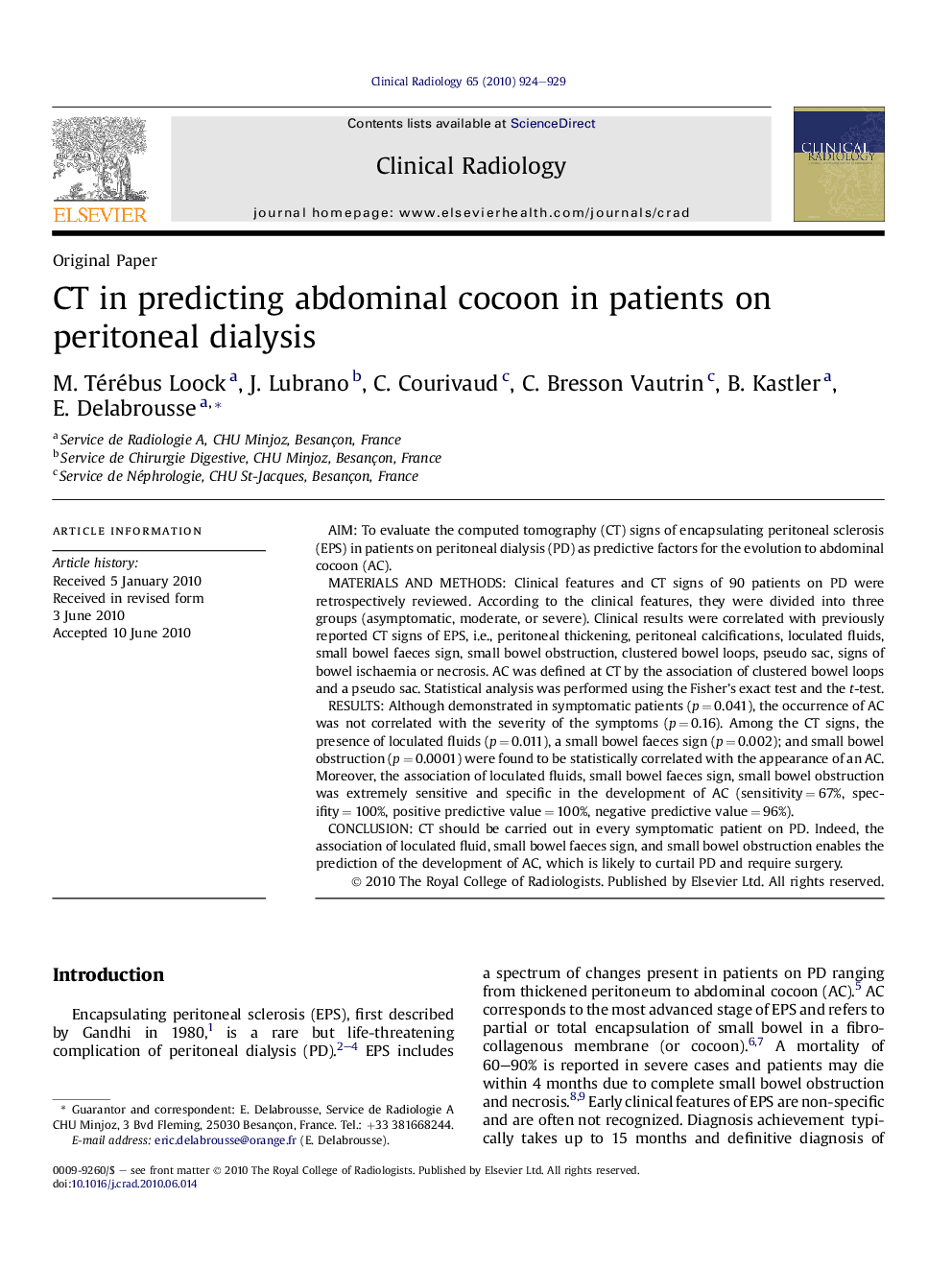| Article ID | Journal | Published Year | Pages | File Type |
|---|---|---|---|---|
| 3982973 | Clinical Radiology | 2010 | 6 Pages |
AimTo evaluate the computed tomography (CT) signs of encapsulating peritoneal sclerosis (EPS) in patients on peritoneal dialysis (PD) as predictive factors for the evolution to abdominal cocoon (AC).Materials and methodsClinical features and CT signs of 90 patients on PD were retrospectively reviewed. According to the clinical features, they were divided into three groups (asymptomatic, moderate, or severe). Clinical results were correlated with previously reported CT signs of EPS, i.e., peritoneal thickening, peritoneal calcifications, loculated fluids, small bowel faeces sign, small bowel obstruction, clustered bowel loops, pseudo sac, signs of bowel ischaemia or necrosis. AC was defined at CT by the association of clustered bowel loops and a pseudo sac. Statistical analysis was performed using the Fisher’s exact test and the t-test.ResultsAlthough demonstrated in symptomatic patients (p = 0.041), the occurrence of AC was not correlated with the severity of the symptoms (p = 0.16). Among the CT signs, the presence of loculated fluids (p = 0.011), a small bowel faeces sign (p = 0.002); and small bowel obstruction (p = 0.0001) were found to be statistically correlated with the appearance of an AC. Moreover, the association of loculated fluids, small bowel faeces sign, small bowel obstruction was extremely sensitive and specific in the development of AC (sensitivity = 67%, specifity = 100%, positive predictive value = 100%, negative predictive value = 96%).ConclusionCT should be carried out in every symptomatic patient on PD. Indeed, the association of loculated fluid, small bowel faeces sign, and small bowel obstruction enables the prediction of the development of AC, which is likely to curtail PD and require surgery.
